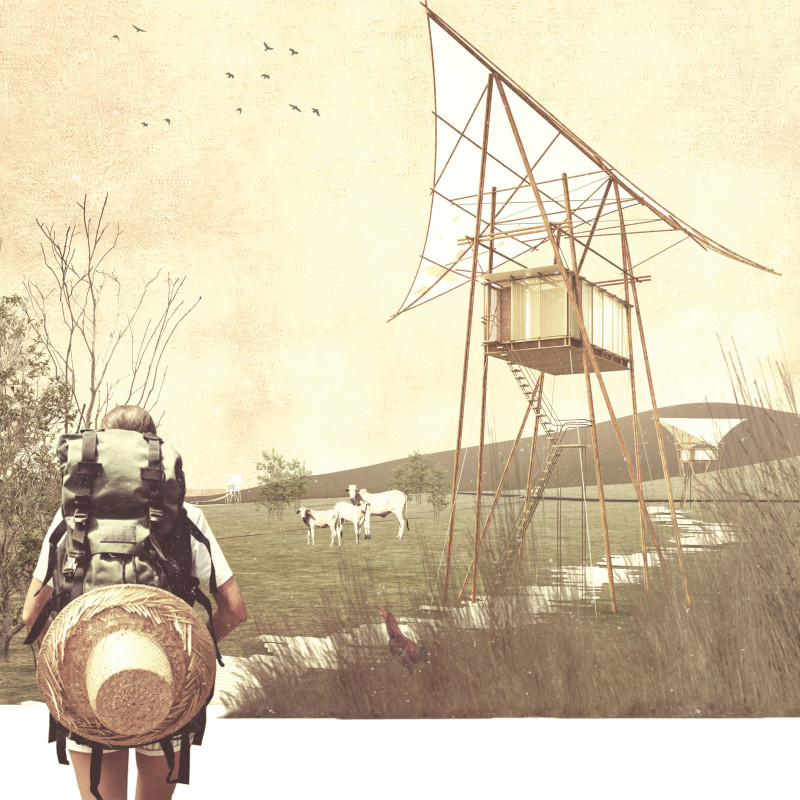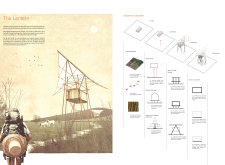5 key facts about this project
"The Lantern" is an architectural design that examines how people live in harmony with nature. Located near a mountain and facing wide open fields, the project features a small residential hut. This design aims to enhance occupants' experiences of the natural environment while ensuring their comfort and privacy.
Elevation Strategy
The hut is elevated, which helps improve views and allows for greater interaction with the landscape. This elevation addresses practical issues, like keeping insects and animals at bay. It also aligns with local building practices that often favor elevated living spaces. By lifting the structure, the design highlights the importance of connecting with the surrounding area.
Spatial Configuration
At 20 square meters, the hut uses a column and beam support system. This structure permits a more open façade but limits some of the open-plan layout options. Alternatively, a structural wall system might allow for more open spaces, but it comes at the cost of façade expression. This balance between privacy and openness is critical, allowing occupants to feel secure while still appreciating the outdoors.
Translucent Design Elements
A prominent aspect is the hut's suspended design, which helps blur the separation between inside and outside. The use of translucent materials allows natural light to flow into the living area. This design choice creates a sense of openness while maintaining privacy. It supports a close relationship with nature, making it easier for inhabitants to feel a part of their environment.
Functional Design Features
The hut’s layout includes practical components like under-storage that helps maximize the small space. Essential functions, such as bathrooms and entrances, are blended into the design, ensuring they do not dominate the interior. Bamboo is used for certain parts of the hut, reflecting local construction methods and emphasizing sustainability.
As light filters through the translucent features, the interior transforms throughout the day. This dynamic quality encourages occupants to engage more fully with both the space and its natural surroundings. The soft glow created by the materials enhances the hut’s character, making it a welcoming space at any time.





















































